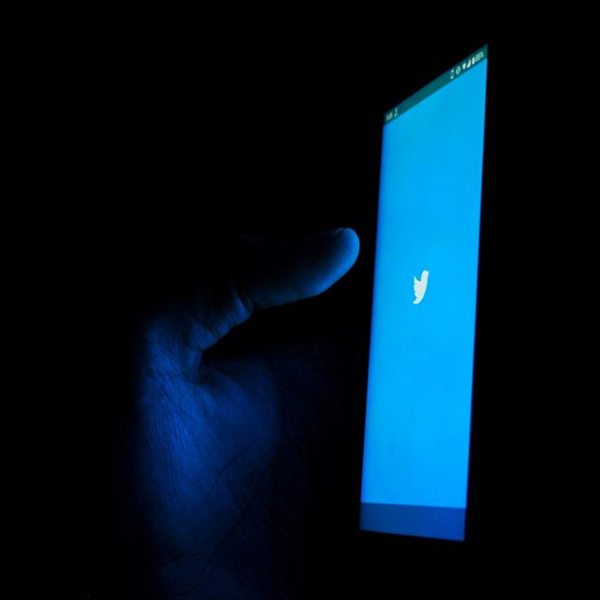Companies are bought and sold every day. It's not unusual in the business world, and for the most part, the transactions go smoothly. Sometimes, the purchases are more than most people can fathom. In 2017, Amazon purchased Whole Foods for $13.7B. In 2020, the pharmaceutical company AstraZeneca bought Alexion Pharmaceuticals for $39B.
But what about buying tech companies whose value is sometimes inflated, or the buyout is risky due to the nature of the industry? Some companies have taken a chance and fared well from their purchases. For example, in 2018, IBM purchased Red Hat, an open-source platform, for $34B. In 2020, Salesforce purchased Slack, a business messaging app, for $27.7B. Despite the price tags, these companies are showing profits.
Yet none of them received the press that Elon Musk is getting with his acquisition of Twitter.
Why? Is this purchase really that different from others? Is it that an individual with a larger-than-life personality, not a company, acquired it? Could it be the contrary decisions being made or the massive loss of employees that has everyone waiting for the next development?
The Business of Buyouts
According to Narayanan Jayaraman, Thomas R. Williams-Wells Fargo Professor of Finance at the Georgia Tech Scheller College of Business, this purchase is definitively unique.
"It's different because of the size of the deal at $44B. A deal where one individual, Elon Musk, has put up around $33B of his own money is substantial," he noted.
Musk not only put up his own money but also sold 19.5 million shares of his electric car company, Tesla, an amount equal to almost $4B plus loans from third-party sources. While he can afford such a purchase, there are aberrations to this deal that make it riskier for the world's wealthiest man ($222.6B) than other deals he's made so far.
In 2021, Twitter posted a net loss of around $220 million. That was a good year, considering the company reported a loss of over $1B in 2020. It's been bleeding for a while now, and its free service model and declining advertising revenue have certainly contributed to the bloodletting.
However, it's not unique for a buyer to purchase a company with debt. In fact, purchasing a non-profitable company and reducing headcount can be quite common.
"It's okay to buy a firm with negative profits because you hope to turn the firm around and make it profitable and grow the business. However, academic research has found that some CEOs end up buying firms because they are overconfident about future prospects," said Jayaraman.
Buying a company that's losing money can be a good thing if the owner has a long-term vision and stakeholders are willing to go along for the ride. But by taking the company private, Musk has avoided being accountable to stakeholders, and all stocks were returned to them at $54.20 per share, an amount Jayaraman thinks is overpriced.
"Often, a buyer takes the company private with a lot of debt. When the firm is private, you can get rid of underperforming businesses, significantly reduce the headcount, and make the firm operationally more efficient. After five years or so, you can bring back the private firm to the public market or sell it to some other private equity firm," he explained.
The Consequences of Organizational Upheaval
"Layoffs are to be expected when there is a merger or acquisition. One of the expectations is there will be efficiencies by reducing redundancies or overlaps," said Terry Blum, Tedd Munchak Chair and Professor of Organizational Behavior at Scheller.
In the month that Musk has taken over (the acquisition started in April and was completed in late October), his plans include doing away with moderated content, charging customers a subscription fee for receiving a blue check mark that validates their accounts, and laying off over half of Twitter's 7,000+ employees - about 3,700 in all. And the number of employees who've left keeps growing. At least 1,200 additional employees jumped ship after Musk revealed his vision for Twitter 2.0. included giving employees the choice of working longer hours on-site or leaving - offering them less than 36 hours to decide after he made the announcement. As Blum states, layoffs are not uncommon when a company changes hands, but this one is certainly different.
"Organizational change is altering components of an organization or company, things like its culture, technology, or business model," she said. "Leading effective change is possible, but it requires a lot of good leadership and followers willing to engage. The process needs to be done in steps over a long period of time for a purposive change (it is possible to change things negatively without intending to do so). Culture and strategy go hand in hand but remember that culture eats strategy for breakfast."
After losing so many employees, Musk sent out several memos requesting information about Twitter's infrastructure. When many of the company's most essential employees had left, he asked the remaining staff for help. The loss of many of its engineers and other employees who work behind the scenes to maintain its infrastructure and security to keep services going could have a severe impact. As a simple example, without product support and protection for the user, the company could be in deep trouble, and its users could be the target of data breaches.
"The way it's done speaks volumes about the organizational culture and affects not only the employees but the customers," said Blum.
Without the staff to protect customer privacy, Musk may face the ire of the FTC. Throw in their watching eye, and one must ask how much Twitter can maintain its services, much less grow.
The Problem of Legitimacy
"The early signs are not good for the company,” said Jayaraman. “The implementation is not being handled well. Some of the talented people have already left. It is not clear that Musk has the bandwidth to run these different companies. Competitors like Mastadon are gaining subscribers. Time will tell. Of course, Twitter has 237 million monetizable Daily Active Users as of the second quarter of 2022, so we cannot rule out future success after early stumbles."
Twitter doesn't have a communications department anymore, so the only information the public is getting is from Musk – and disgruntled employees. It's not a far reach to say that employee loyalty is a thing of the past, at least in the near future. Before the purchase, Twitter may have been hemorrhaging funds and its business model may have needed severe revamping, but the speed at which changes are being made now may have bankrupted the company technically, psychologically, and culturally.
"There is a question about whether a company has legitimacy. When things are done in a dramatic way, questions arise as to whether the company and its leader are stable. It raises issues about, not just what is done, but how it is done," Blum explained. "In this case, the legitimacy affected the advertisers and the bottom line. There is also possible spillover onto Tesla's reputation, with those who are not only questioning Twitter's leadership but unfavorably rating the leadership of Musk’s other companies."
Calculated Risks and Rewards
It's too early to know if the company can survive the abrupt changes Musk is making. Betting on its demise might be short-sighted though. Musk appears shrewd and savvy, and his talent for seeing future possibilities and acting on his visions is undeniable.
Musk has a history of creating successful businesses beginning in 1995 with his rollout of Zip2, an online local business directory that he sold for $22 million. He started an online bank in 1999 that later became PayPal and reportedly made $22 million from that sale. He created The Boring Company, which he envisions as a remedy to transportation gridlock by creating tunnels to shuttle drivers from one place to another. A few have already been built in Las Vegas, with more in the works.
His company, Neuralink Corporation, creates 'brain-to-computer interfaces' with applications that may help cure neurological disorders and allows humans to interact with computers in new ways by implanting a chip in the brain. Research is already being conducted.
His Starlink internet satellite company is currently helping Ukraine keep its internet working. The company offers subscription-based services to individuals in over 37 countries with others on the waiting list. He also owns two solar energy companies: Tesla Energy and SolarCity.
His two sparkling jewels, Tesla and SpaceX, are mostly household names, and they're doing well. Tesla didn't always turn a profit, but it is now. In the third quarter earnings report this year, it brought in over $3B. His SpaceX rockets have achieved 187 successful launches, and he has his eye on the Moon as a potential colony.
In a stroke of luck or genius, none of Musk's companies have ever gone bankrupt. Will Twitter be his first, or is this latest purchase causing a business disruption that will result in a different social networking platform altogether? It's too early to tell, but he is making a drastic impact with his fast-moving changes, including losing valuable employees. For now, the media hype isn't hype at all. News reporting about Twitter isn't exaggerated, but it's challenging to keep up. Reporters are simply recording what may be one of the most talked about buyouts in corporate history.
Twitter seems to be teetering, but then again, Tesla didn't report a profit for 17 years. It is possible that Musk has the vision and determination to make this work. And he can afford to wait.

